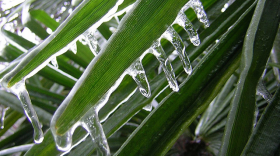University of Florida researchers have made some headway in their quest for cultivating vanilla plants that would thrive in the state.
The scientists have successfully sequenced the plant’s genome, which means they can find the best genetic traits to grow the crop in Florida.
The vanilla extract commonly found in grocery stores comes from vanilla planifolia, a commercially grown species. Eighty percent of the vanilla consumed in the U.S. and Europe comes from the island nation of Madagascar, which is located off the east coast of Africa.
Dr. Alan Chambers is a professor of tropical fruit breeding and genetics at UF’s Institute of Food and Agricultural Sciences. He and his team have been working on this project for about two years.
Chambers said Florida has a few native types of vanilla plants, and while those plants do not have any commercial value, they do have a higher resistance to diseases.
Now that the researchers have the ability to identify the differences in the species genetically, they can use the information to create what Chambers' called a "hybrid plant" — a vanilla plant that will yield a better flavor and aroma than the commercially produced vanilla planifolia with the disease resistance qualities of Florida vanilla plants.
Chambers said the prolonged dry periods in South Florida provide an ideal climate for growing vanilla plants but doesn't foresee the potiential for a large-scale Florida vanilla market.
“I can see our growers producing in niche and specialty types of vanilla focusing on agritourism, local markets,” Chambers said.
Once Chambers' team is able to combine desirable genetic traits and identify ideal growing conditions, they plan to teach local farmers how to cultivate the plant.








